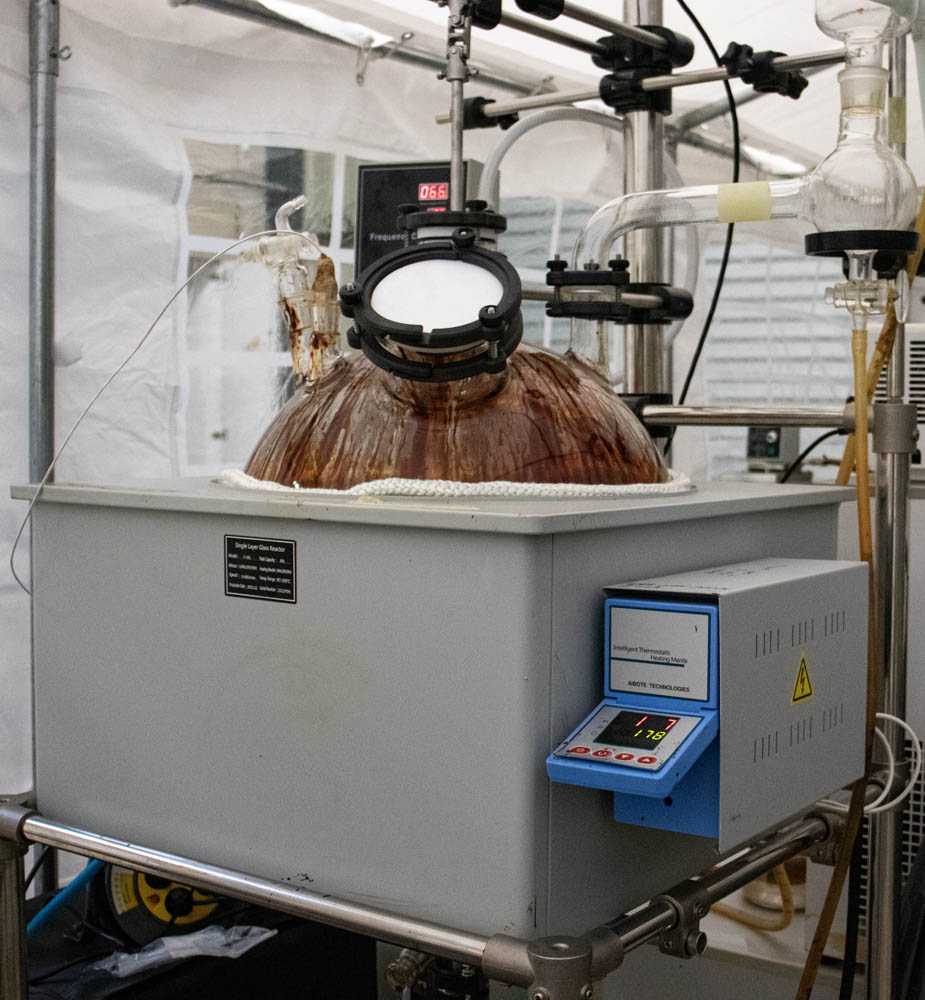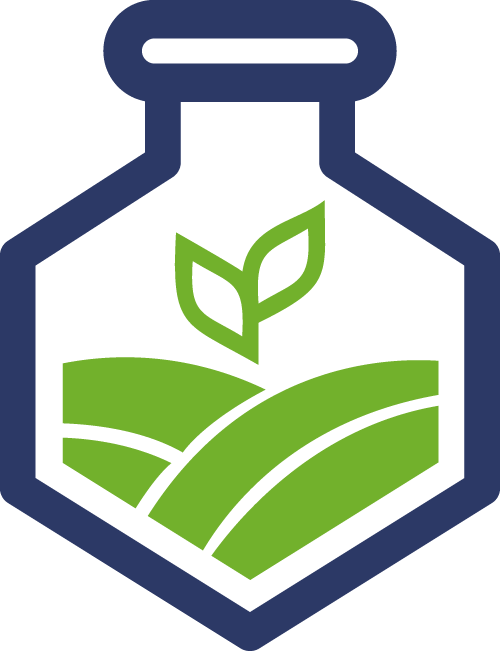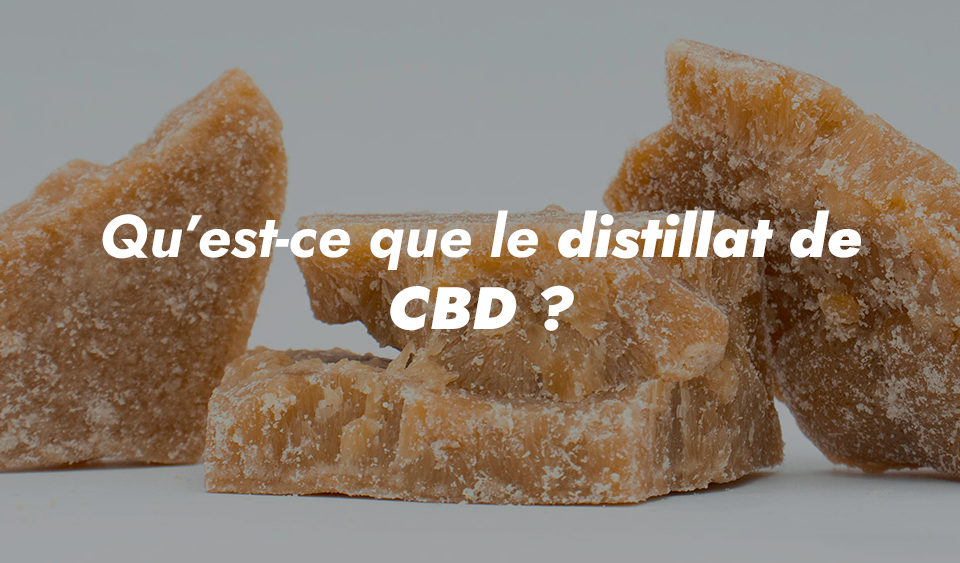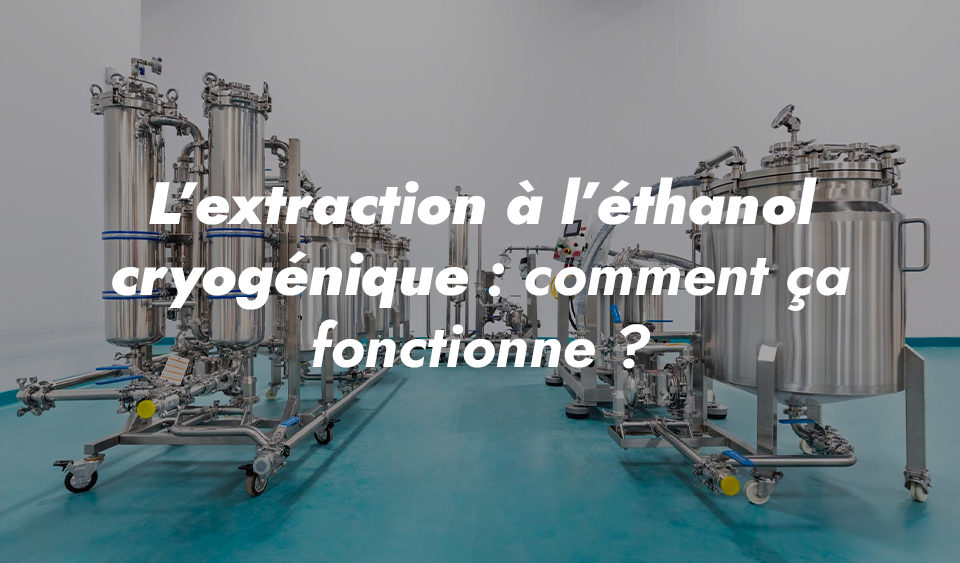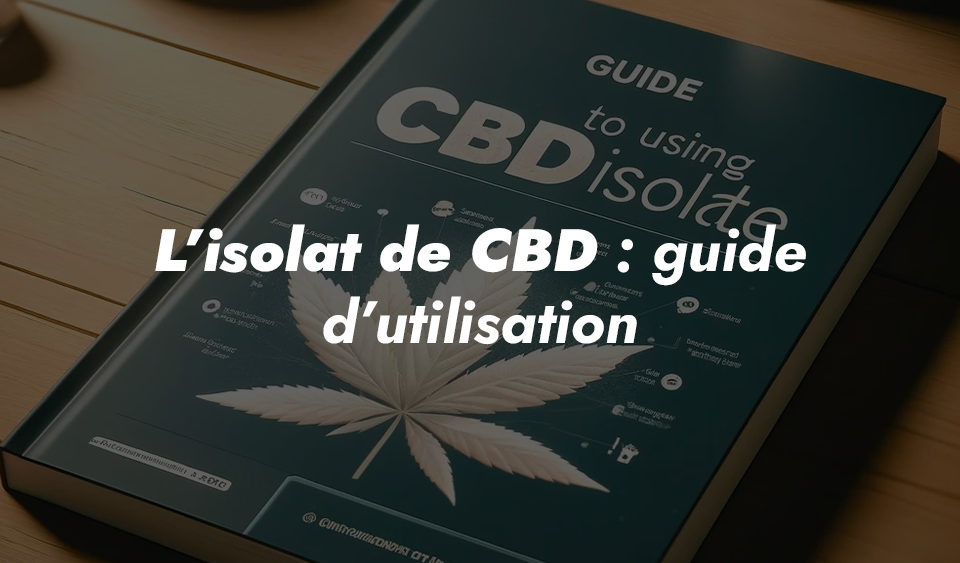
CBD patches: a must-have?
August 30, 2023
#7 - On parle de nous - TF1
November 1, 2023The extraction of cannabinoids and terpenes is the very first step of products formulated with hemp extracts.
The result is crude oil. Also known as cannabis resin, this precious liquid is purified to produce distillate, isolate or mother liquor, the basic ingredients of all CBD products, whether full or broad spectrum.
There are many extraction techniques. As professionals in the industry, it's important to be familiar with them. Whether to inform your customers or to choose your CBD manufacturer. Here's an overview.
Hemp extraction: what does it involve?
Cannabinoids and terpenes are synthesized in hemp flowers, more specifically in the glands, the trichomes. The extraction process consists of separating these small crystalline droplets soaked in sap.
There are two main families of extraction techniques:
- Extractions of the mechanicalmechanical extraction, using a press or sieve (strictly speaking, this is a "separation" and not an "extraction", as no third-party products are used);
- And extractions using a solventsuch as oil, supercritical CO2, butane, propane, etc.
Whether in terms of cost, technicality, yield or ecology, each method has its advantages and disadvantages. It is therefore difficult to single out one over anotherThe choice of extraction technique also depends on the type of product to be manufactured.
For example, supercritical CO2 extraction precisely targets the components to be extracted, resulting in a high-quality broad spectrum concentrate, while hydrocarbon extraction produces a remarkably pure full spectrum concentrate.
The main techniques for extracting molecules from hemp
Extracting the active molecules of cannabis is a skill born of the desire to take advantage of the plant's intoxicating and therapeutic properties.
With the popularity of CBD products, these extraction techniques have been adapted to the specific needs of the industry. In addition, the flowers used are exclusively from varieties registered in the EU catalog. Their common denominator is their THC content, which is less than 0.3%.
Extraction by pressing (rosin press)
Extraction by pressing, known as rosin press, involves subjecting the flowers to high mechanical pressure (several tons) to separate the resin (the "live resin").
The principle is simple, but in practice there are several unknowns, including press time and plate temperature. These variables influence the organoleptic quality of the product. For example [1]:
- If pressing is carried out at a temperature between between 65°C and 105°Cthen the harvested resin is very fragrantbecause the terpenes are intact, but this is at the expense to the detriment of yieldwhich is not optimal;
- On the other hand, if the flowers are pressed between plates at temperatures between 105°C and 120°Cthen the yield is much higher, but the final product will be slightly less fragrant.
The result of pressure extraction is a full spectrum live resin resin, which can then be purified to obtain a resin even more concentrated in cannabinoids and terpenes (chlorophyll and other plant residues are removed).
Extraction by sieving
Extraction by sieving is undoubtedly the best-known technique of all, as it produces hashishthe most popular cannabis product of all.
This extraction technique involves sifting the flowers to separate the trichomes. The powder obtained is called kiefor pollen. Very sticky, because it's full of resin, and very fragrant, because the terpenes are intact, the kief is then compacted to produce hash.
There are several ways to remove as many trichomes as possible without damaging them:
- Dry sievingis the most traditional technique used to produce Afghan hashish. Hemp flowers are sifted using a pollen box (= a more or less tightly-meshed grid equipped with a collection chamber).
- The Ice-o-latortechnique, sometimes called Bubble Hashor Water Hashinvolves washing hemp flowers with ice-cold water to detach the trichomes. Beforehand, the flowers are placed in a filter bag, which collects a solution composed of trichomes and frozen water. A second filtration is then carried out to obtain a trichome powder.
In order to obtain the highest quality hash, the harvested kief powder must then be refined. Regardless of the extraction process used. It's good to know, moreover, that there are three levels of quality kief (the lowest level of refinement), demie-fonte and fonte complète (which contains no plant residues, only pure resin).
Oil extraction (or infusion)
As you probably know, cannabinoids are hydrophobic. This is why hydrodistillation, the ultra-popular extraction method used to make essential oils, is totally obsolete in this case.
That said, it is possible to extract cannabinoids (and terpenes) with fat. Oil extraction is one of the most popular of all DIY techniques, because it's extremely simple to perform: simply immerse the flowers (decarboxylated beforehand) in vegetable oil (or any lipid base) and wait before filtering the mixture.
This involves infusing the flowers to capture their essence to capture their essence without any alteration. The extract obtained may be refined.
Supercritical/subcritical CO2 extraction
This technique is widely used because it is possible to precisely target the cannabinoids to be extracted. It can therefore be used to obtain a wide range of extracts, from full spectrum to isolate.
Moreover, carbon dioxide is an inexpensive substance, as well as being clean and reusable. clean and reusable.
This type of extraction can be performed in two ways [2] :
- With supercritical CO2 (high pressure, high temperature). It acts like a gas to separate the trichomes from the plant material, but concentrates them in liquid form;
- Alternatively with CO2 in a subcritical state (low pressure, low temperature). In this case, it behaves like a liquid and acts like a traditional solvent.
Using CO2 in the supercritical state is riskier (the process is carried out at high pressure), more expensive and the extract obtained is of poorer quality (a high temperature is not ideal for preserving all the terpenes) than that harvested via extraction with CO2 in the subcritical state.
However, it is the most widely used technique in the industry, as it offers higher yields.
Cryogenic bioethanol extraction
Ethanol may well be the world's oldest solvent! In fact, it has been used since the dawn of time to produce spirits of all kinds. of all kinds. It is a bi-polar solvent, capable of extracting any type of molecule.
When it comes to extracting cannabinoids, ethanol is the solvent of choice, since it extracts the entire molecular baggage of the plant. the plant's entire molecular of the plant. However, this advantage is double-edged, as it is not possible to not possible to target and purification processes. On the other hand, low-temperature extraction (between -40 and -30°C) enables us to extract the maximum number of terpenes. a maximum number of terpenes.
Last but not least, ethanol offers a key advantage: it's the only type of extraction that can obtain an organic label.
Hydrocarbon extraction
Hydrocarbons have a bad reputation because they are synonymous with petroleum derivatives. Indeed, hydrocarbon extraction suggests the use of butane and propane, two gaseous forms of petroleum. Nevertheless, this extraction technique is widely used in the industry, and with good reason.
It's true, the yield is truly excellent extracting almost 3 times more material than with supercritical fluid extraction. Extraction quality is also excellent, as only cannabinoids and terpenes are extracted. This also means that eliminates the need for a purification step which removes chlorophyll and vegetable fat.
Contrary to popular belief, the use of hydrocarbons is perfectly safe for your health. In fact, these petroleum-based substances are widely used in the food industry..
At Green Exchangerather than using petroleum derivatives such as butane or propane, we want to exploit the formidable properties of TFE (tetrafluoroethane): a solvent used in pharmaceuticals that enables extraction to be carried out at low temperature and low pressure, resulting in a high-quality extract.
The main cannabinoid extracts used in the manufacture of CBD products
Now that we've reviewed the main extraction techniques, let's take a look at what's harvested!
As we mentioned earlier, cannabinoid extracts the vast majority of cannabinoid extracts are used as raw material for CBD products of all kinds. products of all kinds. From oils and enriched resins to e-liquids. For CBD professionals, manufacturers and wholesalers alike, it's vital to be familiar with them.
Crude and mother liquor
The first extract obtained after extraction is crude oilsometimes called "cannabis resin". Viscous and brown in color, crude oil contains all the molecules and substances synthesized in hemp flowers.
In order to use it in the manufacture of CBD products, a few purification and refinement steps are required. Vegetable fats and chlorophyll must be removed. Moreover, at this stage, THC levels are potentially above the applicable threshold. A so-called "remediation" is therefore required, to bring the level of the prohibited cannabinoid below 0.3%.
👉 Crude is a full spectrum extractIt contains CBD (approx. 60%), minor cannabinoids (approx. 5%), THC (less than 0.3%) and terpenes. It is generally used to make CBD oils.
At the same time as the crude is harvested, what is known as "mother liquor" is also harvested. "mother liquor. This honeyed, pale-yellow liquid is a kind of residue from the extraction process. It contains the missing part of the crude CBD (around 40%), minor cannabinoids (around 25%) and a little THC (less than 0.1%). It contains no terpenes, which have been "caught" in the crude.
👉 Mother liquor is an interesting extract for its its minor cannabinoid content.
CBD and crystal resistant distillate
After extraction, several purification stages produce the distillate. A concentrated, refined version of crudethis extract offers great freedom of use, as its composition can easily be modified.
With the right equipment and knowledge, it is possible to produce several types of distillate:
👉 Distillate of CBD full or broad spectrumwith or without THC (with 85% CBD, minor cannabinoids and terpenes);
👉 Distillate of CBN (50%);
👉 Distillate of CBG (80%) ;
👉 And even, distillate of H4CBD (98%), which is a synthetic cannabinoid (hydrogenated cannabidiol). hydrogenated cannabidiol)
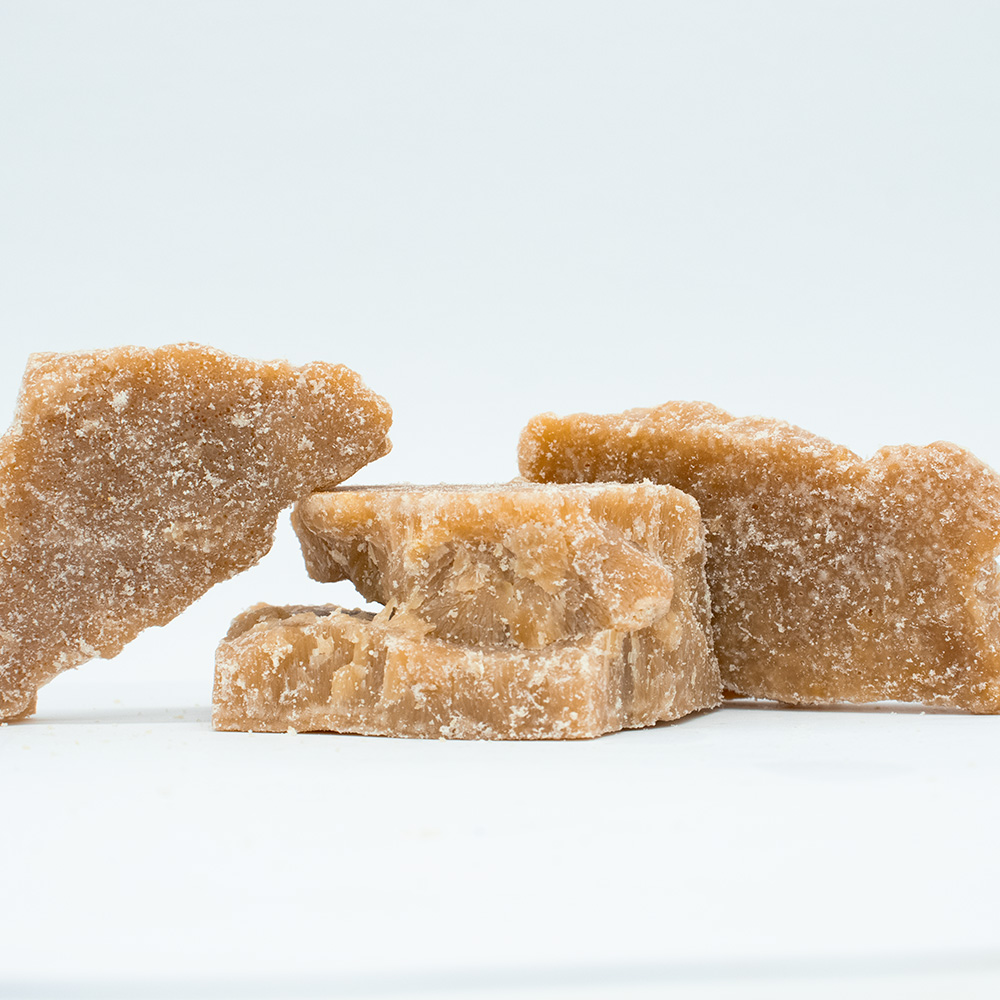
At Green Exchange, we have also developed a distillate resistant to crystal formation. Indeed, as you may know, over time, CBD molecules molecules tend to clump together, forming small small crystals in the oil or e-liquid to which the distillate has been incorporated. Crystal-resistant distillate, as the name suggests, overcomes this problem.
CBD isolate
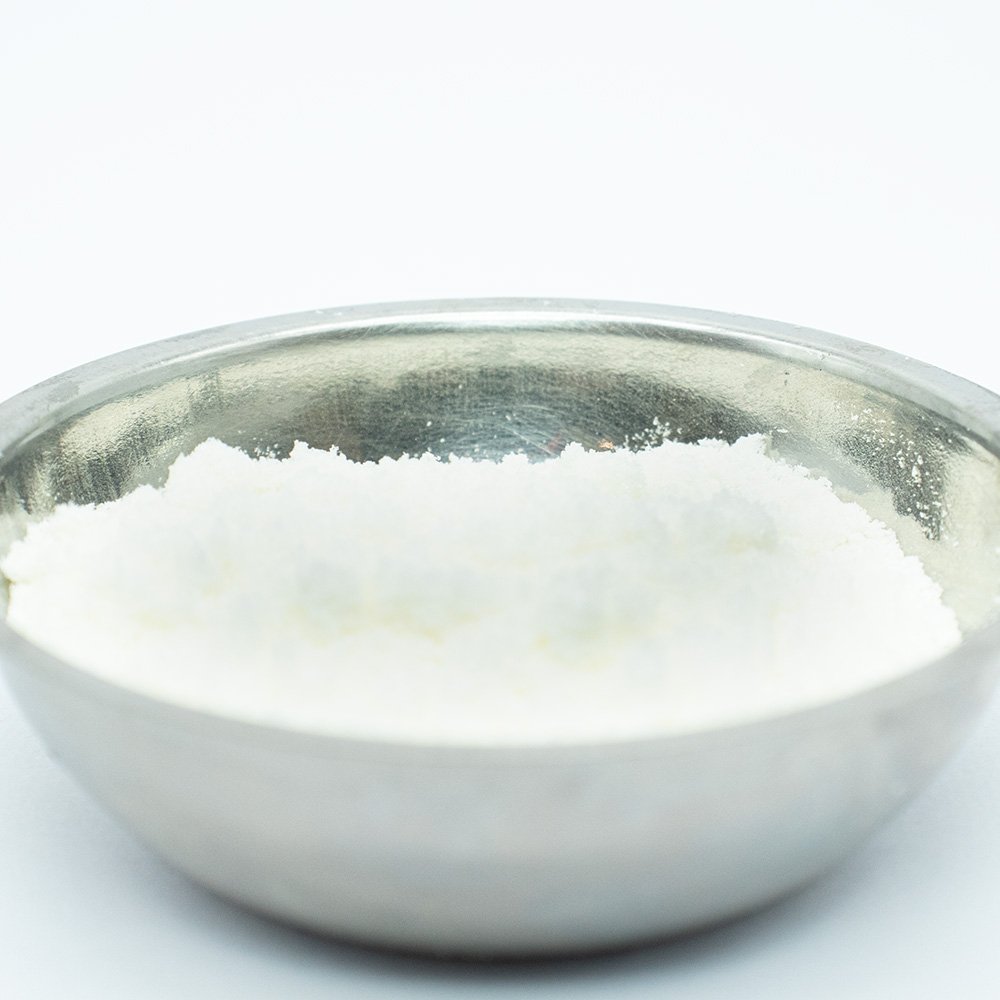
Isolate, which comes in the form of a white powder of small crystals, is the purest and most refined hemp extract. the purest and most refined hemp extract. It contains only one cannabinoid, concentrated to over 99%. Most often, this is cannabidiol, but CBG and CBN isolates are also available.
CBD isolate is pure and highly dosed, but what's more, it has no taste or smell. This makes it particularly suitable for use in cosmetics, edibles and pharmaceuticals. It can also be incorporated into any formulation to enrich it.
CBD concentrates
If crude oil is subjected to different pressure and temperature conditions, CBD concentrates of various shapes and compositions will be obtained:
👉 Wax As the name suggests, this is a type of wax, usually full spectrum, which can either be consumed as is with a water pipe or incorporated into certain formulations;
👉 Crumble Also full spectrum most of the time, this concentrate is characterized by its crumbly texture. It too is eaten with a dab;
👉 Shatter Similar to crumble and wax in terms of composition, shatter resembles crystallized caramel.
👉 Terps sauce A concentrate with a high terpene content that can be incorporated into a product to give it the organoleptic characteristics of hemp.
Where can CBD (and CBG, CBN, etc.) be extracted in France?
Cannabinoid extraction has recently been authorized in France. Green Exchange is proud to be one of the first French laboratories to have obtained approval from the ANSM (Agence nationale de sécurité du médicament et des produits de santé).
Prior to this, our facilities were located in Switzerland, which enabled us to to acquire not only the experienceand all the equipment we needed to become France's leading cannabinoid extraction center.
Today, in addition to offering professionals a variety of extraction solutions (supercritical CO2, cryogenic ethanol, etc.), we also guarantee the quality of our extracts and the products.
- All our extractions are made from organically grown biomass (hemp flowers). organicallyin France (on our Agrican farm);
- Our extracts are meticulously purifiedand refined using our own innovative techniques;
- And finally, to guarantee a THC level of less than 0.3% and the composition of our extracts/products, we systematically supply laboratory analysis results.
If you would like to find out more about our French cannabinoid extraction center, please do not hesitate to contact our team.
Call on a recognized French extraction laboratory
Our knowledge and equipment make us one of the few French players capable of handling large volumes of biomass and complying with specific specifications for the extraction of your plants.
